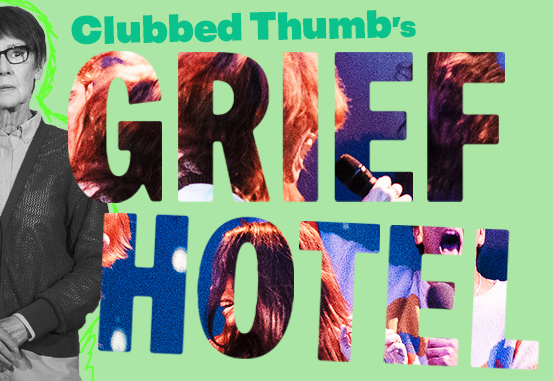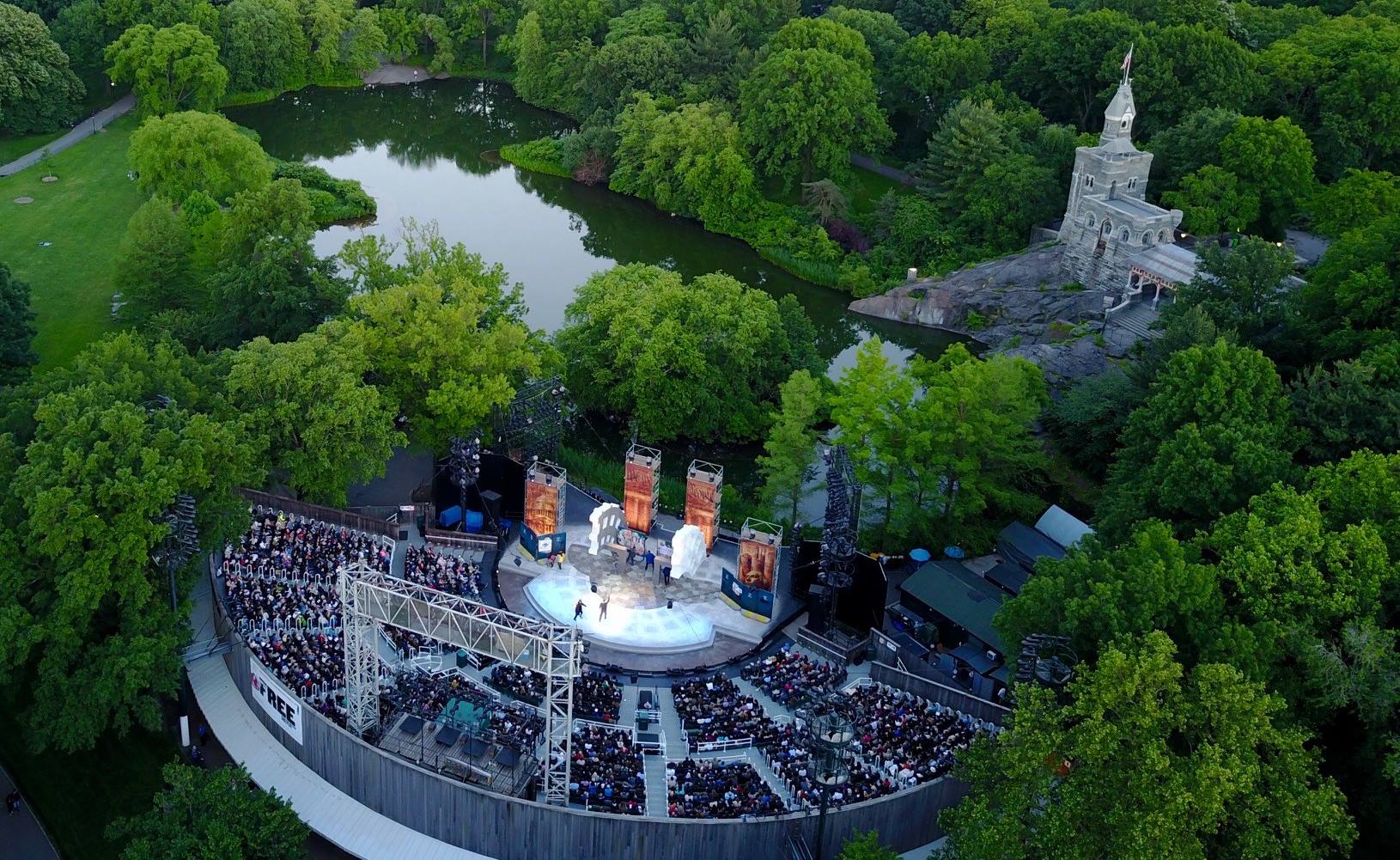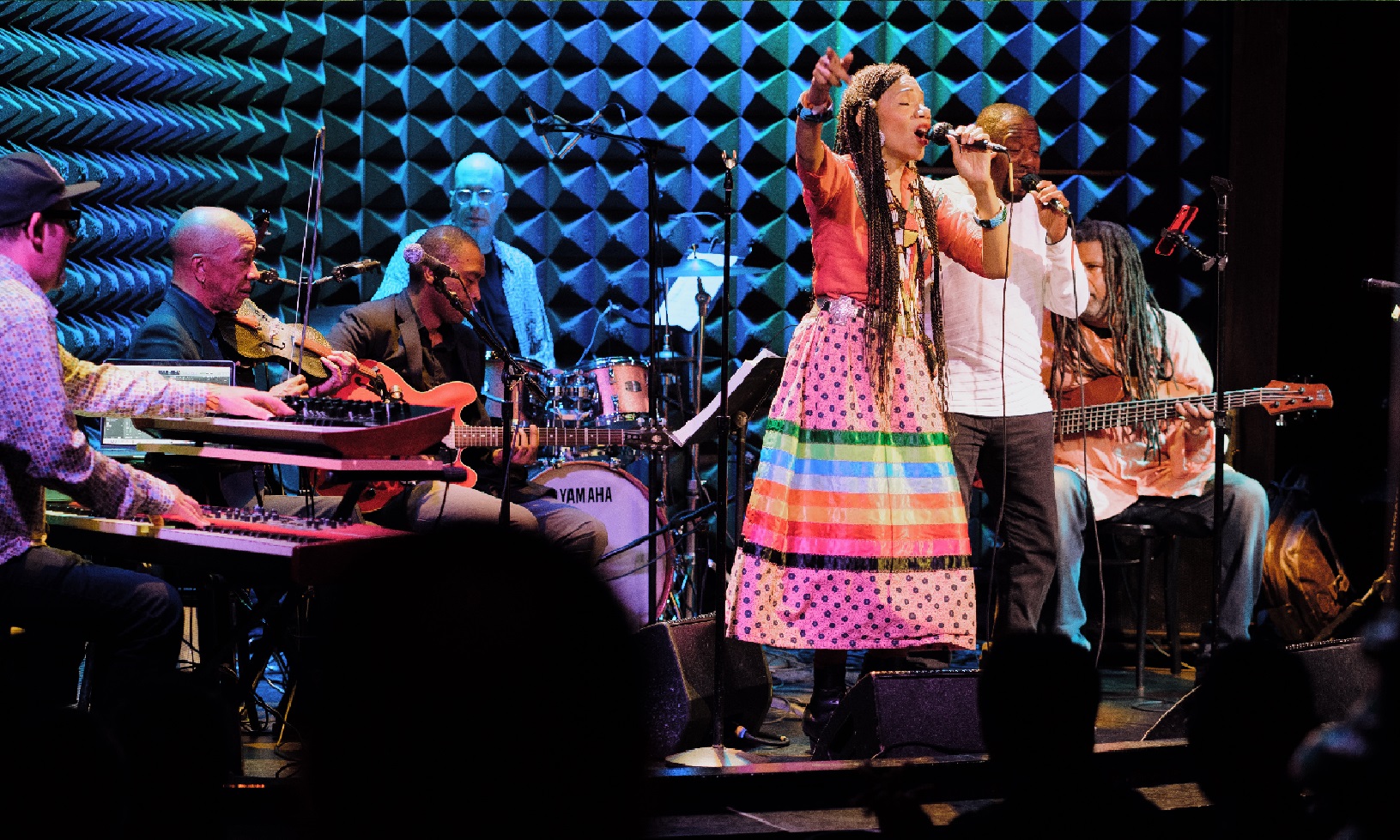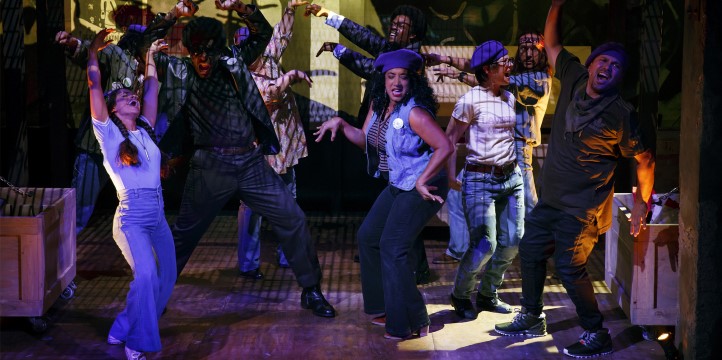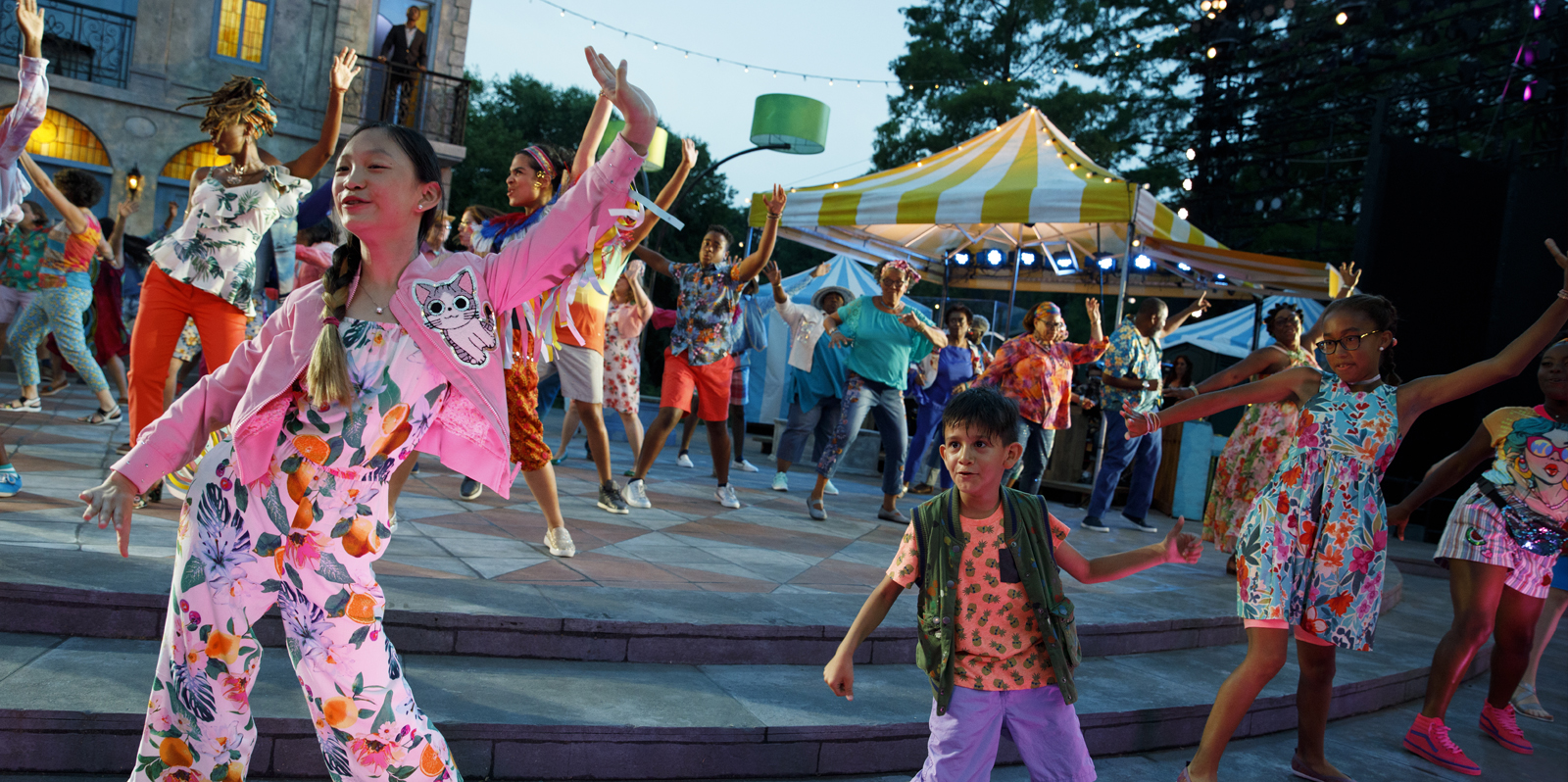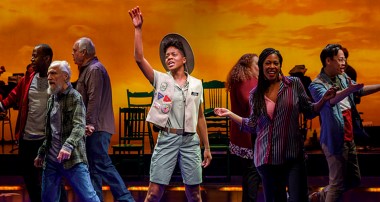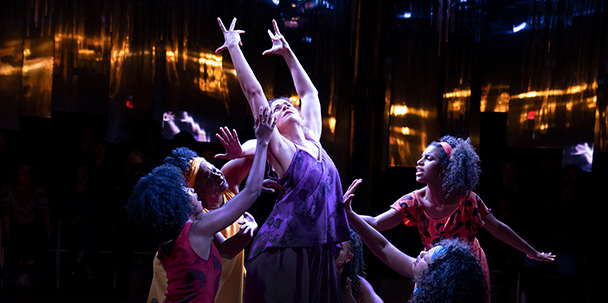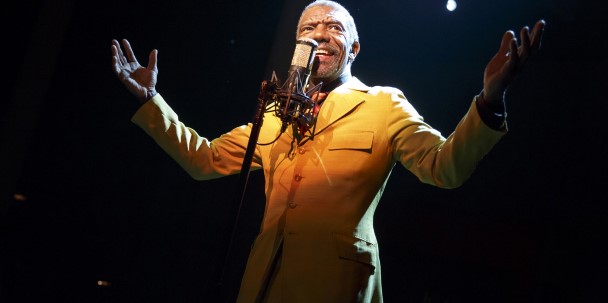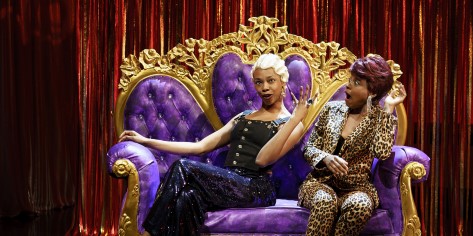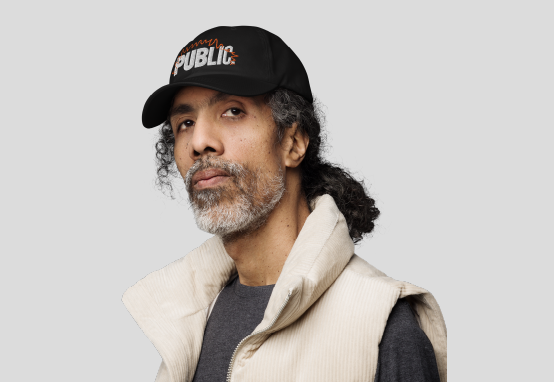In an electrifying live production of shadow/land by Erika Dickerson-Despenza, a lyrical meditation on survival, ancestry, and memory amid Hurricane Katrina, movement is a vessel for story. shadow/land invokes a choreopoem, combining lyrical poetry, dialogue, live music, and audience interaction—all of which play with culturally precise, age, and gender-transcending movement that underscores the words and explodes in your face.
Such a movement-rich piece guided by Black spirituality demanded an equally rich (and spiritual) process. Annie Nguyen explores the sacred craft of Jill M. Vallery (she/her), shadow/land's movement director, whose intuition in the rehearsal room honored its bodies, the text, the legacy of Black femme survival in New Orleans, and the way forward for humane movement direction and theater-making at large.
ANNIE NGUYEN: How would you describe the movement vocabulary in shadow/land?
JILL M. VALLERY: It’s seductive, explosive, polyrhythmic, dynamic. It’s honest. It’s reaching through timelines—past, present, future—and a combination of culture. I was blessed to work with Christine Shepard (Grand Marshal), and be able to translate my cultures, movement, and expression to her. And give her space to add her own, because second line, which is something indigenous to New Orleans culture, is all about your ability to improv. So it’s a guttural, funky, sassy expression.
AN: It's dancing from the gut, so building it must have been intuitive. How communal was the rehearsal room?
JMV: Oh, it was absolutely communal. Something that I wanted was the inclusion of ancestral altars in the space to not only honor the unseen in the room but the people coming in with them. As a movement director, I’m accountable for the next person’s energy and space. For example, if someone’s coming in and they’re just down and out, it’s about being able to hold that person up. It’s community holding, which was definitely part of this process. So I appreciated Candis C. Jones (Director) giving me the space for community warm-ups where we could all breathe together, make noise together, dance together. Laugh together. We’re all starting from a space of connection.
AN: That resonates because New York City throws so much at/into our energetic field. I can’t fathom commuting and then being expected to just drop in; there has to be an energetic container. How did you build yours?
JMV: I like to incorporate movement in the beginning to have people embodied and tap into spaces, which you normally wouldn’t do if you just came in right off the streets of New York City and be like, “Okay, let’s rehearse.” Definitely. I start with yoga because it encompasses not only movement, but also awareness and attention to breath. It’s a space of presence to really, really clear the mind. We also incorporated a beautiful book, Ancestors Said, and we read through it every day. It had passages related to ancestors, presence, and purpose that framed where each and every individual in the room was in their lives.
AN: The movement direction isn’t just choreography or even telling the story; it’s the process of harnessing energies in the room.
JMV: A lot of people think that movement direction is “dance,” but it’s about the emotional and physical vocabulary of the artist. So there was a gesticular language that I created for Ruth, for Magalee, and Grand Marshal that intertwined both of those languages within the body of gesture. It was a rich experience speaking with the actors—what are some of the emotional energies or psychology they’re feeling in the moment? How does that translate in the body? For example, when I was working with Lizan Mitchell (Magalee), Magalee used to be a chorus girl. So there were exercises that I explored with Lizan so that she could activate in that space.
AN: You’re meeting the artists and their bodies halfway, and sometimes (a lot of the times) the body gets stuck. How do you protect the actor?
JMV: I lead with safety within the body and make sure they’re inside of the movement I’m creating, protected. Safety is a continual creative process because everybody’s different, right? So my care comes in an individual one-on-one connection that I have with an artist—but overall there is an umbrella. It’s understanding what an artist needs, like moving back to the hips, creating a movement study, and helping them find greater alignment. And that honestly comes from my own awareness and understanding of the body. Our actors also receive physical therapy and psychological assistance from The Public Theater; we’re all working in tandem with each other. In terms of spiritual safety, it’s all about where a person is within their own development and where they are within their connection to ancestral source energy. I did this with Joy-Marie Thompson (Understudy Grand Marshal): a practice of connecting with your ancestors that’s very simplified and involving water.
AN: Are we talking water water or Florida Water (a cleansing water used in various spiritual practices)?
JMV: Florida Water! I shared Florida Water with Joy-Marie because when one goes into an altar space, it is recommended that your aura and energy are cleansed. Especially coming from our travels in New York City. It’s a very simple way of acknowledging the spiritual energy within yourself and how it connects with the benevolent ancestors that are here to assist you on your journey.
AN: This is an ethos that I see emerging more and more today. We might no longer be concerned with separating the rehearsal room from our holistic being and wellness.
JMV: I appreciate the fact that Erika Dickerson-Despenza understands the importance and space for it. The work she has created requires one to show up in their fullness and feel safe as possible. One of the things I talk to the other directors about is that the creative process is more than coming in here and creating it and going home. Especially for this piece, you are psychologically dealing and experiencing each other in such intimate ways. In authentic ways, should you show up in your full expression of vulnerability.
AN: It sounds like your movement direction is the journey from "safe" to "held" to even beyond. Stepping out of process, how would you describe the role of movement onstage?
JMV: Movement is up there with water as a character in the story. Movement is the emotional body within this piece. Movement was the celebration. The joy. Movement was the liberation.
AN: Every time I read a script I identify the line that, to me, is the “thesis” of the play. In shadow/land, Grand Marshal says, “Memory unravels every kind of hunger.” Maybe your job was to unlock memory that then unraveled that hunger.
JMV: Absolutely. Absolutely.
shadow/land is now playing at The Public Theater through May 28th. Click here for showtimes and tickets. To learn more about the show, tune into The Public’s podcast series, Public Square 2.0.
Annie Nguyen (she/they/he) is a Vietnamese dramaturg, poet-playwright, and sound designer from Houston, Texas. She is currently finishing interdisciplinary studies at Carnegie Mellon School of Drama that investigate language and sound. Outside of school, she is a spiritualist and dancer, both of which inform every creative room she’s in. Feel free to keep up with her on Instagram: @amourannie.
This piece was developed with the BIPOC Critics Lab, a new program founded by Jose Solís training the next generation of BIPOC journalists. Follow on Twitter: @BIPOCCriticsLab.
PHOTO: Jill M. Valery developing movement with Christine Shepard (Grand Marshal); photo by Joan Marcus.

